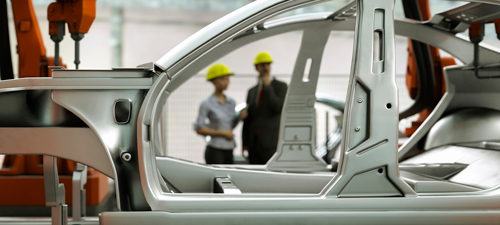To produce an injection molded part that is structurally sound, functional and efficient, you need to start with good design. Many factors come into play during the design and engineering process, and it’s important for manufacturers to consider these things carefully to ensure the success of their part. While there isn’t a single formula for producing an injection molded part, there are several rules that you can follow to make the design and engineering process a lot easier for you.
- Include draft angles: Draft angles are designed to promote part removal after injection molding. Without draft angles, there is a much greater likelihood that parts will be scraped along the sides when they are removed from the mold. Draft angles should be at least one degree for each inch of part depth.
- Design radiused corners: Sharp, angled corners in injection molds can inhibit proper material flow and cause difficulty during part removal. Radiused edges are rounded, creating a softer angle that allows for better material flow, more even concentration of the polymer and improved part strength.
- Avoid undercuts: Undercuts are aspects of a mold design that prevent proper part removal. Sometimes, undercuts are simply overlooked during the design process. In other cases, they can occur due to a defect in the production of the mold. Regardless of why undercuts occur, it’s important to avoid these features as much as possible. Undercuts can prevent you from safely removing parts from molds and you may have to re-engineer your mold entirely to avoid damaging the components that you’re producing.
- Develop shell designs: Shell designs are intended to minimize shrinkage and part defects during injection molding. Solid shapes have greater surface area and are more susceptible to shrinking and warping. Parts with shell designs are the same shape as solid parts, but they feature spacing which reduces defects and minimizes the amount of material that has to be used in the injection molding process.
- Consider specific characteristics of different materials: The type of material that you use can make a significant difference in the functionality, strength, flexibility and performance of your part. The design of your part will be different depending on which material you are using. Some materials are more brittle and have to be designed with thicker walls, while other materials with more flexibility can be used with thin-wall designs.
For more information about injection molding design and engineering, reach out to the team at KASO Plastics. We are proud to provide a wide variety of injection molding services, including engineering and value-added secondary services, so that you can feel confident in the successful production of your part. Contact us today to find out more about what we can do for you.








 Molding services for Agricultural customers
Molding services for Agricultural customers